Indoor Plants for Anxiety and Stress
Quick Navigation
This post may contain affiliate links. Read the full disclosure here
Did you know plants can improve your health?
Having plants in your home is a simple way to improve your health, lift your mood, and reduce anxiety. You can liven up your home while improving the quality of the air you breathe, every day.
Why not enjoy the therapeutic benefits of nature in your own home?
Don’t worry if you don’t have a green thumb (I’ve killed my share of plants). Start with a few easy-to-care-for plants to get into the routine.
Health Benefits of Indoor Plants
House plants can reduce anxiety and stress – plants have been shown to lower blood pressure, help you stay calm, and ease anxiety.
Even the soil can help with stress and anxiety. The soil plants grow in contains a microbe called M. vaccae that acts as an antidepressant.
Looking at plants produces a natural state of calm and they can improve your mood. What an easy way to cheer you up, right?
There is also a direct relationship between oxygen and stress. When you’re getting enough oxygen, your body is less stressed.
Plants Improve Air Quality – It sounds a little scary, but toxins such as asbestos, mold, radon, formaldehyde, benzene, and carbon monoxide may be in your home. These invisible toxins can give you headaches, allergies, cause dry eyes, and asthma.
Certain plants can help absorb these pollutants giving you cleaner air to breathe. Yes please!
How to Choose Indoor Plants
Part of your decision will come down to personal preference. You may not like the look of certain plants, or the colors of a may not fit your style.
You’ll also want to consider the following factors when choosing the perfect plant to help you relax.
Easy to Keep Alive – some plants are more sensitive than others. Your schedule and lifestyle may dictate the type of plant you’re able to care for.
Remember the key here is to find a calming plant and then keep it alive!
Indoor light – Consider the direct and indirect light the plant will get (based on where you put it).
Suited to live indoors – This may seem like a no brainer, but you need to pick plants that do well living inside a home. Indoor plants thrive in temperatures between 60 and 80 degrees, often like humidity, and don’t need constant sunlight.
Ability to Rid Toxins – Some plants produce more oxygen, some are better at removing common toxins, while others offer soothing and anxiety-reducing fragrances. In this article, we focus on plants that can filter the air of nasty toxins to help you breathe easy and stay happy.
Best House Plants for Anxiety & Stress
We compiled a list of our favorite in-home plants for anxiety, stress, and overall well-being. The plants were selected based on their calming scent, ability to boost mood, and for their anti-anxiety effects.
- Aloe Vera
- Jasmine
- Lavender
- Peppermint
- Gerbera
- Snake Plant
- Rosemary
- Chrysanthemum
- Chamomile
- English Ivy Plant
We’ll dive into the details below.
Aloe Vera
This stylish little plant will filter the out nasty toxins.

What is it?
This stemless, spiky succulent is one of over 300 aloe species (though aloe vera is the most popular). It’s native to the tropical and semi-tropical regions of Africa and Europe.
Aloe Vera has healing and soothing properties. The gel inside the plant is used to soothe sunburns and it’s a common ingredient in beauty products.
Drinking Aloe Vera juice offers benefits for digestion and well-being. But it’s not only the gel inside that offers the benefits, the plant itself is worth keeping around your house too!
How it Works
Aloe Vera filters formaldehyde and benzene, chemicals found in paints and household cleaners.
This plant conserves its energy during the day and becomes more active at night, thus producing more oxygen at night.
Considering keeping this cute little plant in your bedroom for fresh clean air while you sleep.
Care
This plant likes indirect sunlight or artificial light. Water Aloe Vera infrequently, but generously.
Wait until the top few inches of soil dry before watering and never let the plant sit in water.
Toxicity
Aloe vera is toxic for cats and dogs, so it may not be the best option if you have pets. Though it’s listed as being mild to moderate on the toxicity scale, it’s not worth it to risk your pup!
Jasmine
Add to your home for a smooth, sweet aroma.
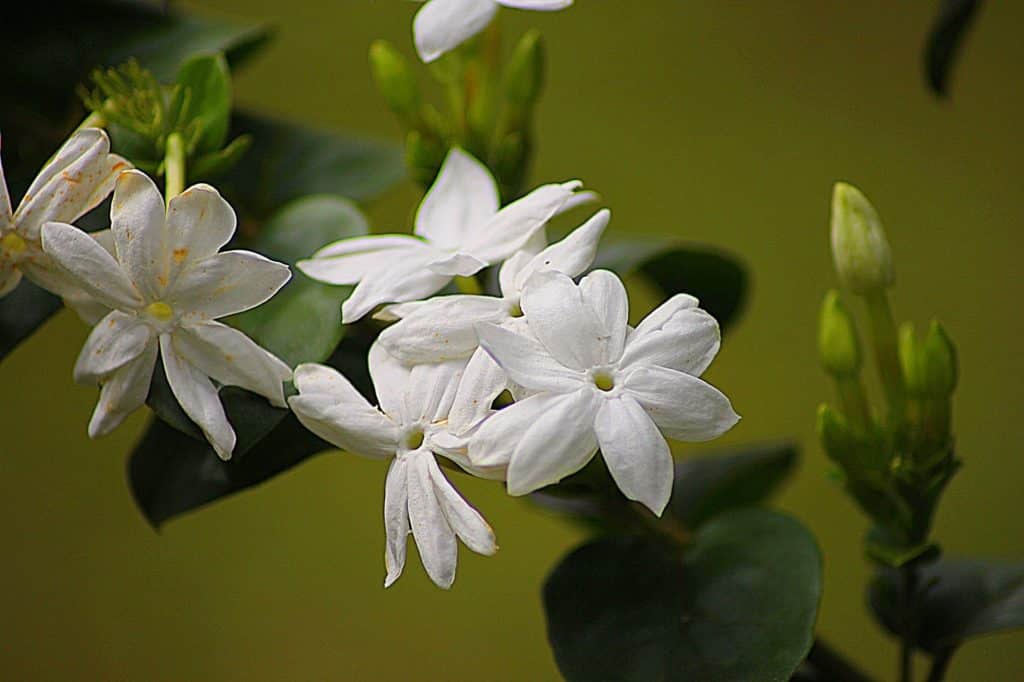
What is It
Jasmine is a vine (part of the olive family) with star-shaped white flowers, though some species have yellow flowers.
Most Jasmine plants are suited for outdoors, so you’ll need to pay attention to the species here if you want to keep as a houseplant. One good indoor option is the Jasminum polyanthum, also known as the Chinese Star.
How it works
Jasmine has a sweet, soothing fragrance often used in essential oils and perfumes.
The sweet smell of a flowering Jasmine plant can fill an entire room. It’s like having a diffuser going all day long.
Jasmine is a great fit for a sunroom, home office, or living spaces.
Since this plant is all about smell, first make sure you enjoy the scent! If you don’t like the smell or it’s too overwhelming to you, this won’t be the best option for you.
Care
Jasmine plants like full sun to partial shade so you’ll want to make sure they are close to a window to get enough natural light.
Like most vines, they need support; consider growing on a trellis. Place in porous soil that drains well. They like soil that’s moist (but not soggy).
Toxicity
Jasmine plants are not toxic to dogs and cats. No need to worry about keeping Jasmine in the house around your furry friends.
Lavender
Enjoy the soothing, sweet smell Lavender in your home every day.
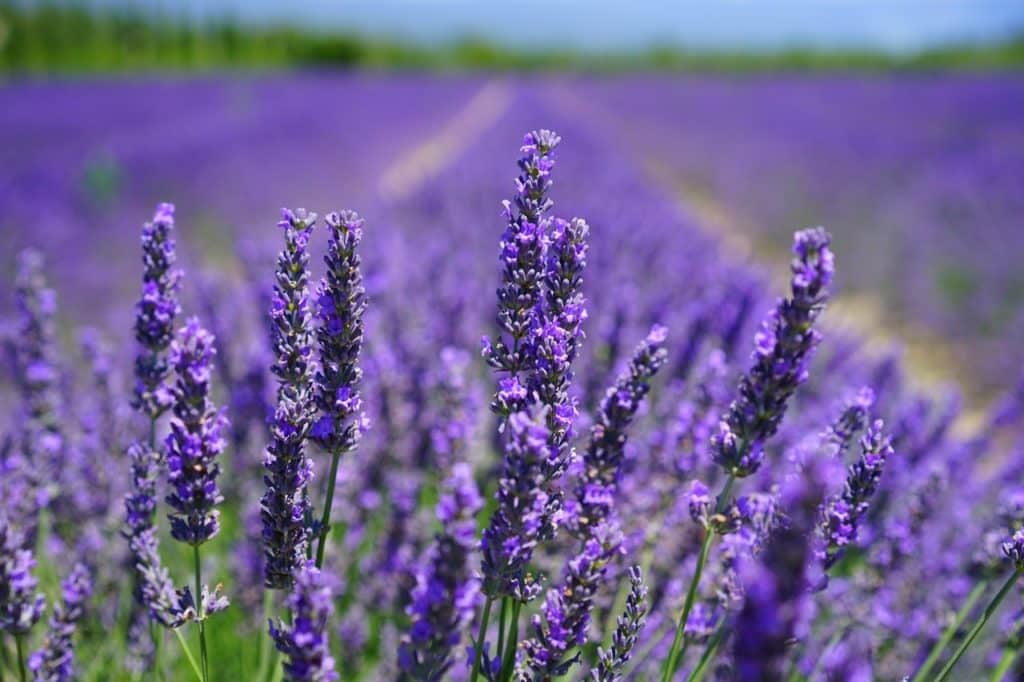
What is It
Lavender is an herb native to the western Mediterranean region. It’s not typically suited for indoors, but it can work in the right environment.
It’s one of the most popular essential oils used to promote relaxation and better sleep. Hence why we love the Lavender plant for reducing anxiety and stress.
How it Works
The beautiful light purple leaves are calming to look at in itself. I love using lavender essential oils during meditation and mindfulness exercises.
Besides its beauty, Lavender oil can help with the management of anxiety and depression in clinical trials. It’s commonly recommended for anxiety, stress, and insomnia.
Lavender contains linalool, which has been shown to reduce anxiety and support a healthy immune system.
Did you lavender candles can be great for meditation? Read about the best scented candles for meditation.
Care
Most indoor Lavender plants don’t reach potential growth since they need a lot of light. Make sure they are getting enough direct light. If not, you may need to supplement with fluorescent lights to keep them happy.
Use lean soil so the roots don’t become oversaturated and place in a pot only a few inches larger than the plant’s root ball.
Toxicity
Lavender is toxic to cats and dogs. This plant is not recommended if you have pets in the house.
Peppermint
Perk up and focus with a cooling, soothing peppermint fragrance.
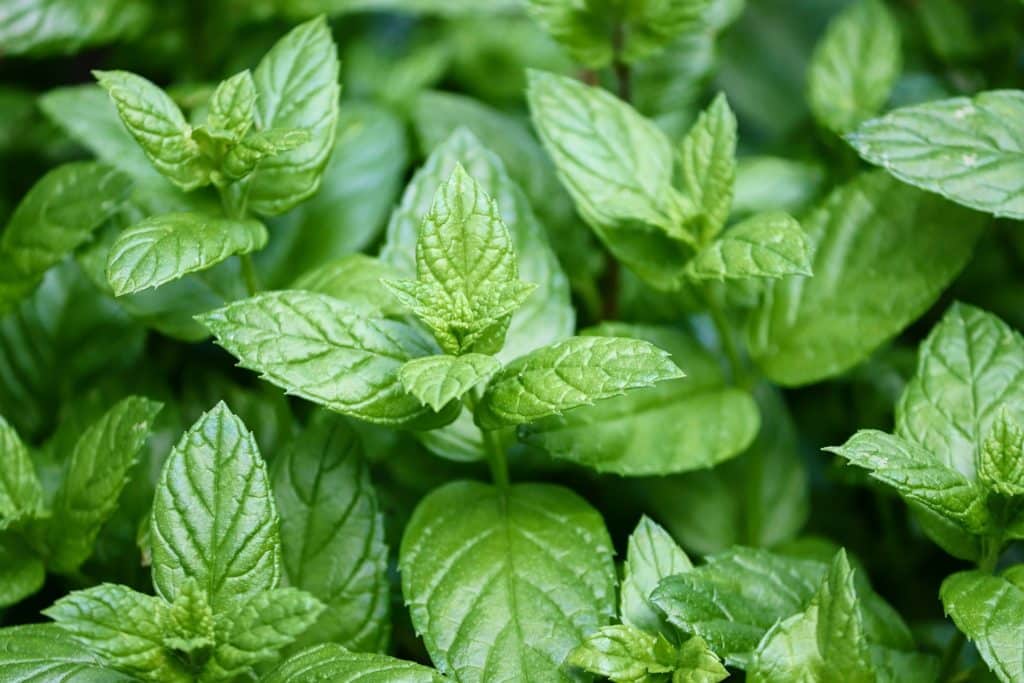
What is It
Peppermint is a plant in the mint family, that was first cultivated as an experimental hybrid of Watermint and Spearmint.
You already know the smell (and taste) of peppermint as it’s used in toothpaste, candy, and chewing gum.
How it Works
When consumed, it also has amazing benefits such as helping digestion, soothing a sore through, and it can even help regulate blood sugar.
The refreshing, yet powerful aroma acts as a stress reliever and it can boost cognition.
Peppermint contains menthol, which is commonly used for its muscle relaxing properties.
Care
This plant tends to spread, though this is not a concern when growing indoors. Peppermint loves full sun to partial shade and nutrient-rich soil.
Keep in a pot with enough drainage. You’ll need to keep the soil moist but not soaked. This plant loves humidity, so misting the leaves between watering can keep it happy.
Toxicity
Peppermint is toxic to cats and dogs. This is probably not the plant for you if you have cats or dogs in the house.
Gerbera
Beautiful, bright, calming flowers for your home.
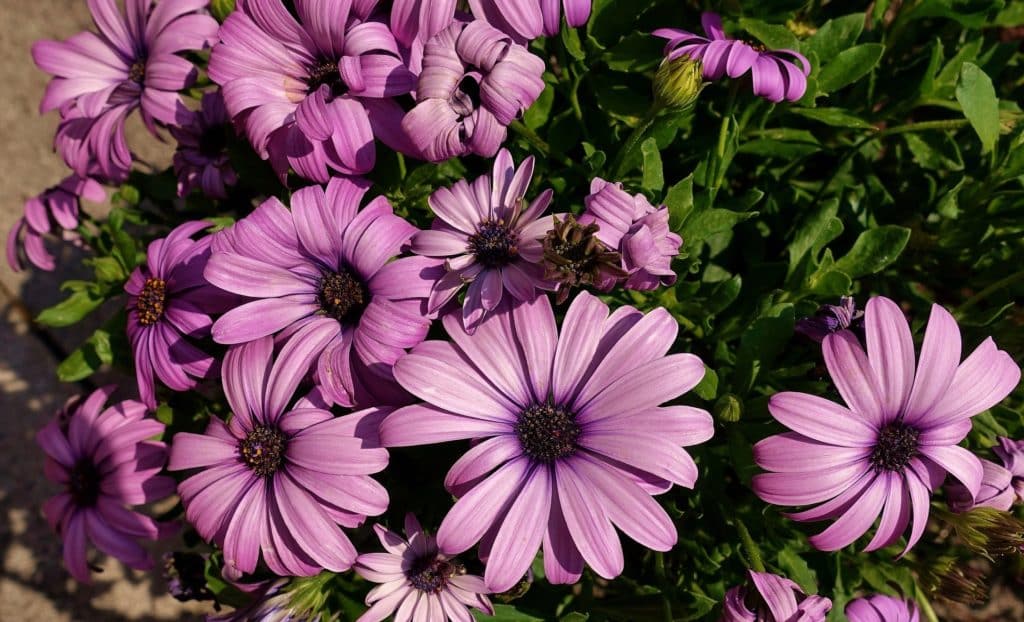
What is It
This beautiful, bright flower is in the same family as Sunflowers and Daisies. The Gerbera is native to the tropical regions of South America, Asia, and Africa.
Also known as Transvaal daisies, these flowers are commonly used in bouquets due to their bright colors and long vase life.
Gerbera daisies are also amazing air purifiers!
How it Works
This plant can remove trichloroethylene, a chemical often used in dry cleaning. This nasty chemical has been linked to kidney and liver cancer.
Gerbera flowers also filter benzene which comes from auto exhaust, cigarette smoke, forest fires, and gasoline. You’ll also find this chemical in lubricants, dyes, and detergents.
You want this friendly plant in your home to help purify the air you breathe every moment. Consider adding these bright flowers in the dining room or living room.
Care
Make sure these flowers get plenty of light and keep them in well-drained soil. Mist flowers between watering to keep the petals vibrant.
Toxicity
Gerbera daisies aren’t toxic to cats and dogs. No need to worry about your pets eating the flowers, it won’t harm them.
Snake Plant
The powerful purifier you want in your home.
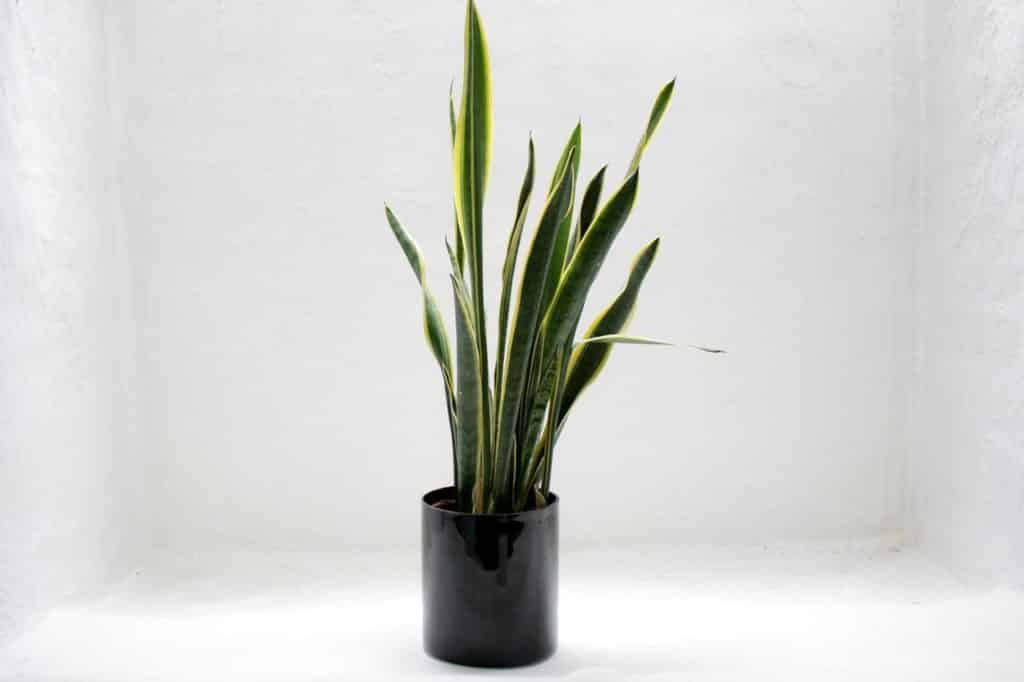
What is It
There are about 70 different types of Snake plants, but all are native to tropical and subtropical regions of Europe, Asia, and Africa.
While they look like a basic office plant, their super-power is purifying the air. This is also a plant that requires little care.
How it Works
The Snake Plant is another powerful air purifier. Similar to the Gerbera, this plant can purify your home of benzene, trichloroethylene, formaldehyde, and xylene.
This air cleaning plant can help relieve headaches, breathing problems, and eye irritation. Cleansing your home of these nasty chemicals reduces the stress on your body.
Care
Put them in direct sunlight and don’t water them too much (this is my kind of plant). Due to the low maintenance, they make for great plants to keep at the office or entryway.
Toxicity
The Snake plant is toxic to cats and dogs. Take caution if you have animals in the house, since it may lead to nausea, vomiting, or diarrhea if consumed.
Rosemary
Enjoy the aroma to boost your mood and improve concentration. Or cook with Rosemary for brain health.
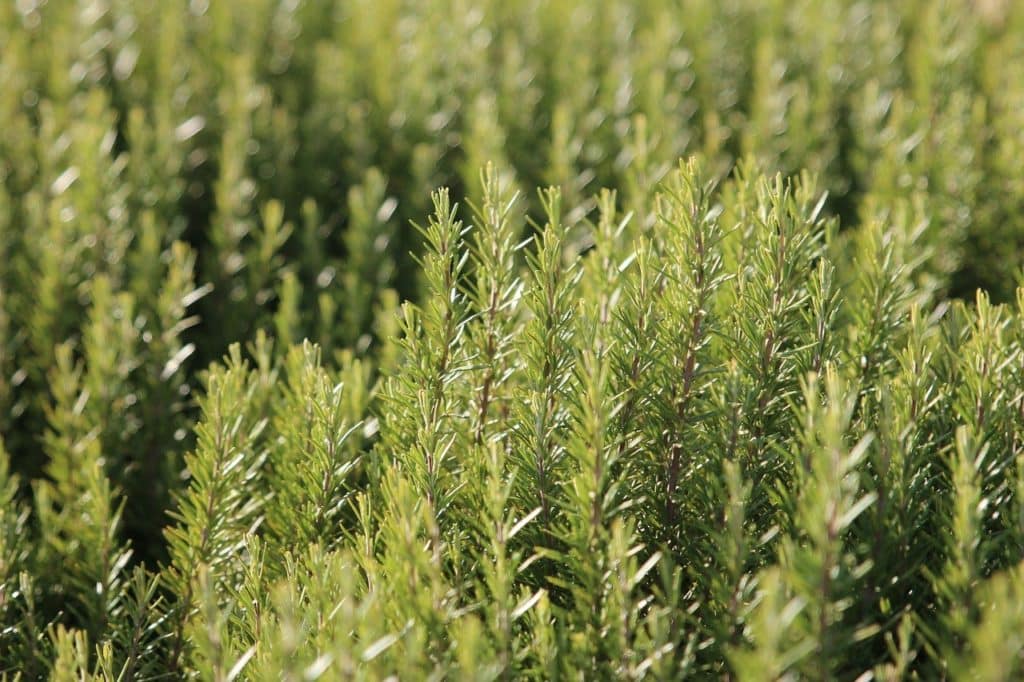
What is it
Rosemary is part of the mint family native to the Mediterranean. It’s a perennial plant, meaning it can live for more than two years.
This evergreen herb has a strong scent (and flavor) making it a popular choice for perfumes and cooking.
How it Works
When consumed, it’s a good source of calcium, iron, and vitamin b-6. It also contains carnosic acid, which can help protect the brain by fighting free radicals.
Research has shown the scent can improve concentration, memory, mental performance, and even mood.
Care
Place in a window sill with direct light. Your Rosemary plant will need at least 6 hours of direct sunlight. If direct sunlight is not an option, consider using fluorescent lights to ensure it gets enough light.
Let the top of the soil dry before watering. Mist the plant on days when the humidity is lower (usually when running the heater indoors).
Consider placing a fan on your Rosemary plant to circulate the air. Stagnant air may lead to the plant getting powdery mildew on it.
Toxicity
Rosemary is not toxic to animals so you don’t need to worry if you have pets in the house.
Chrysanthemum
Lift your mood with these bright flowers while purifying the air.
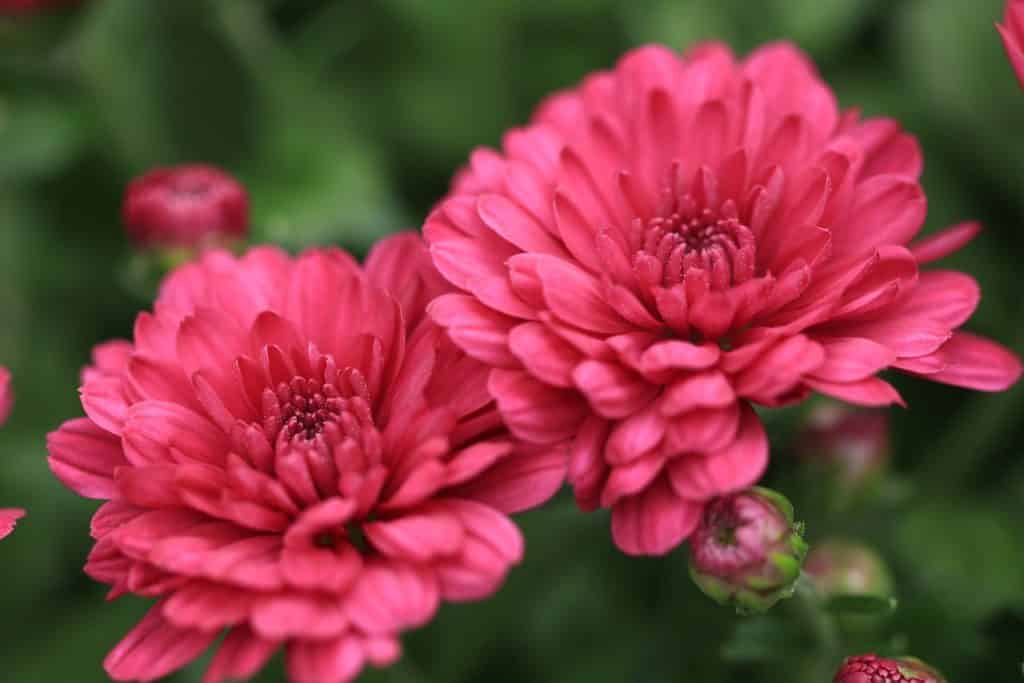
What is It
Chrysanthemums, also called mums, are a type of daisy (flower) that was originally grown as an herb associated with the power of life. You’ll find mums with beautiful bright colors such as white, yellow, red, pink, and purple.
How it Works
This is the perfect flower to brighten your mood. Their bright colors and subtle scent can ease stress and worries.
They’re also great air purifiers, filtering the air of ammonia, toluene, and formaldehyde.
Lastly, you can make tea from the petals, which can calm and relax the body.
Care
Chrysanthemums can survive in most soils as long as it’s well-drained with constant moisture.
Similar to Rosemary, this flower likes to get around 6 hours of sunlight per day.
Toxicity
Chrysanthemums are toxic to cats and dogs, so you’ll want to make sure they are out of reach if you have pets.
Chamomile
The best plant to make a tea out of. You’ll enjoy it’s sweet, floral flavor to help you relax.
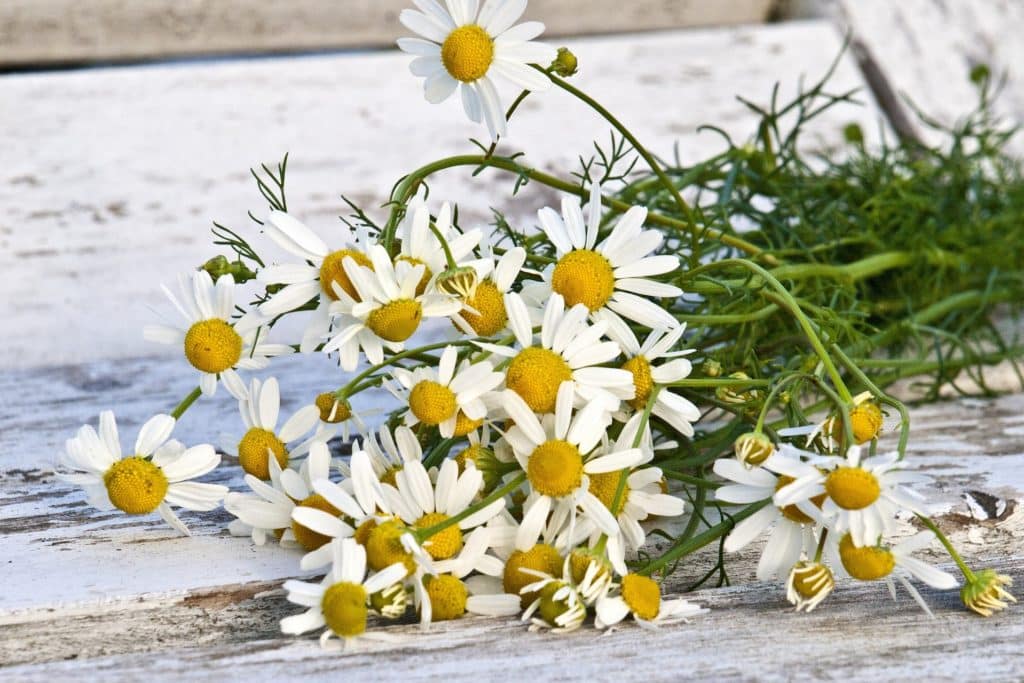
What is it
Chamomile is an herb with petite white and yellow flowers, similar to daisies. It offers a light sweet smell.
Chamomile is widely known and used for its ability to reduce anxiety and promote better sleep. It’s often consumed in a tea but can also be found in skincare and used in essential oils.
How it Works
Chamomile tea can reduce anxiety, stress, and improve sleep. It contains flavonoids, which is a nutrient that is thought to provide the calming benefits.
You may consider keeping the herb itself around the house for its light scent and cute flowers, but the real benefit from this plant comes from its tea.
Care
Keep soil moist but not soaked, watering once or twice a week should be enough.
Toxicity
Chamomile is toxic to cats and dogs, so you’ll want to avoid keeping this plant around animals.
English Ivy Plant
Great for calming allergies – especially those with asthma
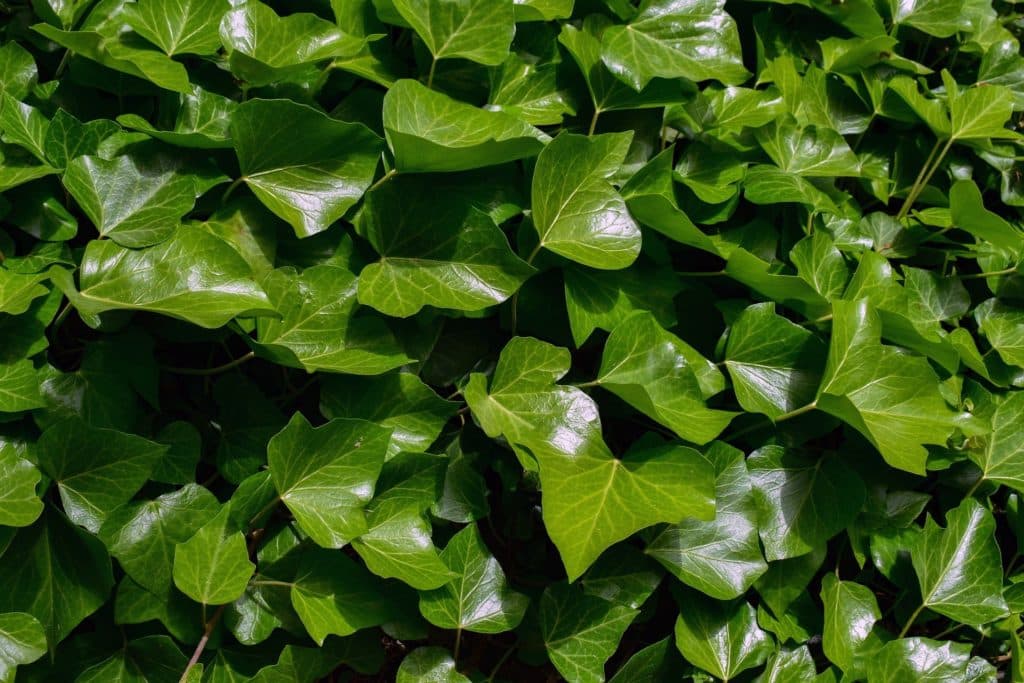
What is it
The English Ivy (or European Ivy) is a perennial evergreen plant popular for outdoor landscaping. But don’t worry, it can also be grown indoors as well!
How it Works
This climbing vine has can purify the air in your home. English Ivy plant filters nasty toxins such as benzene, formaldehyde, xylene, and toluene.
Care
Give it plenty of natural light, or artificial light if that’s the only option. Water ivy generously but then wait until the top of the soil is dry before watering again.
They like humidity but can manage in drier climates as well.
Toxicity
English Ivy is toxic to cats and dogs. Sorry, this is not the best option if you have fur babies.
In Closing
Keeping plants in your home is an amazing way to improve your mood, reduce anxiety, and purify the air you breathe.
The plants listed here are the tip of the iceberg. There are tons of great calming plants (not on this list) that also offer amazing benefits. Don’t give up if you didn’t find the perfect plant for you.
Don’t worry if you are not an expert at caring for plants either. Many on the list are easy to care for and there are plenty of expert articles on nearly every species, you’ll be able to find the help needed.
If you enjoyed this article, you’ll love our post on 50+ ways to reduce anxiety.

